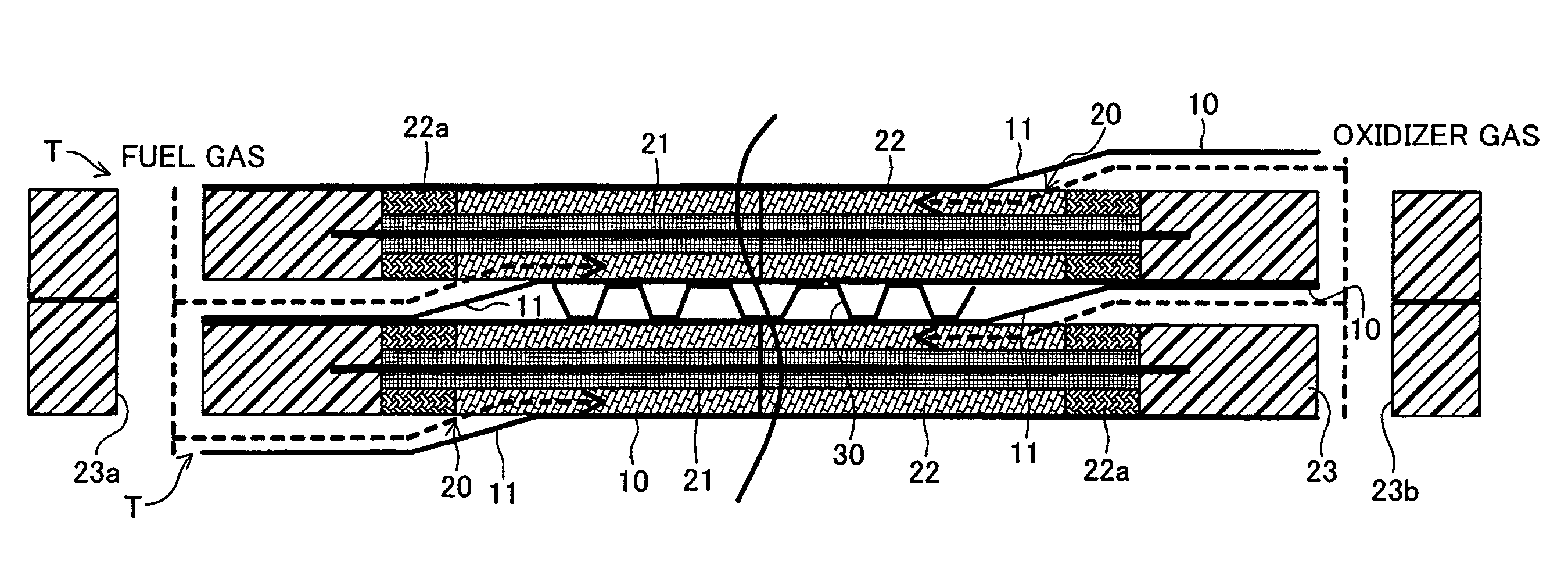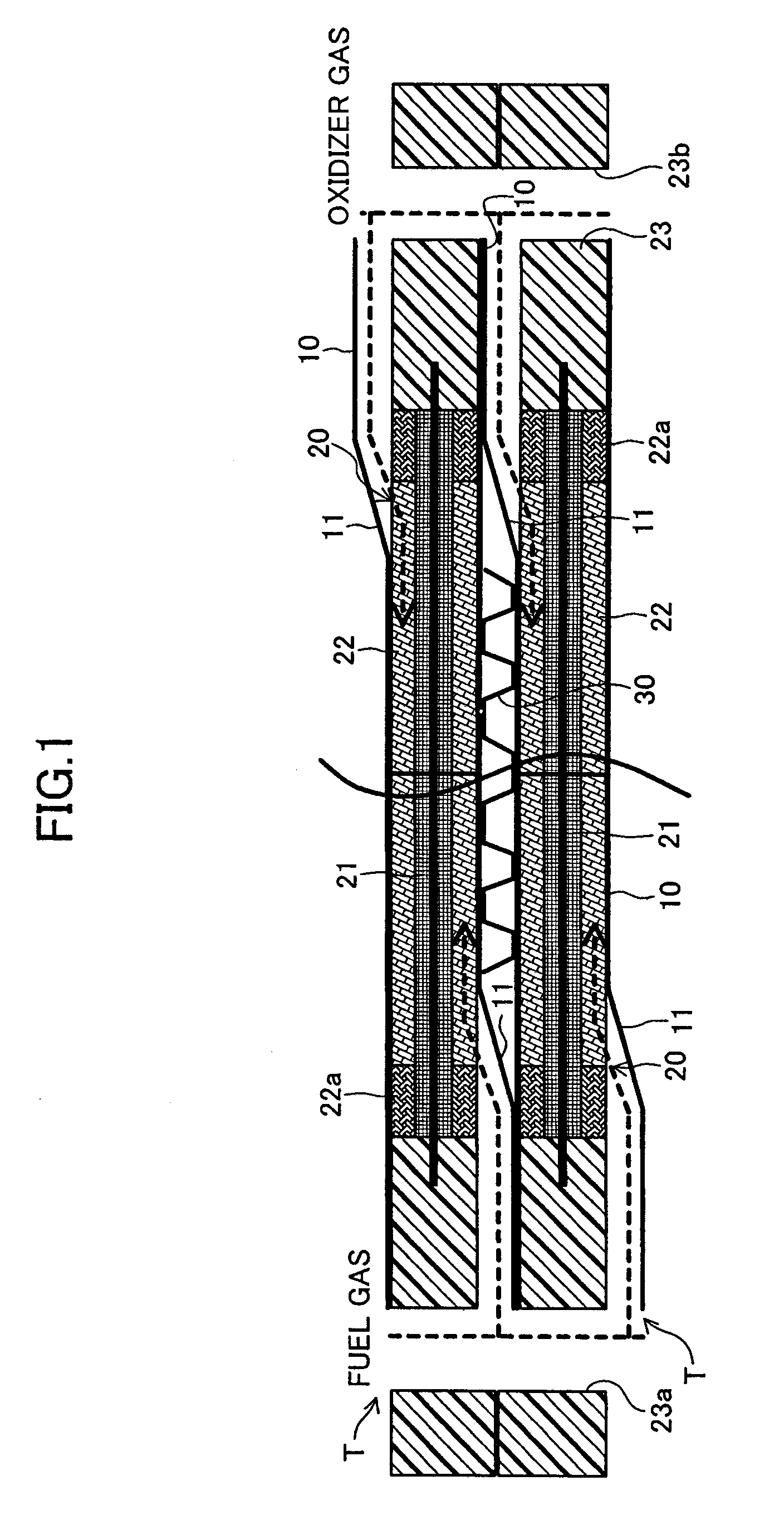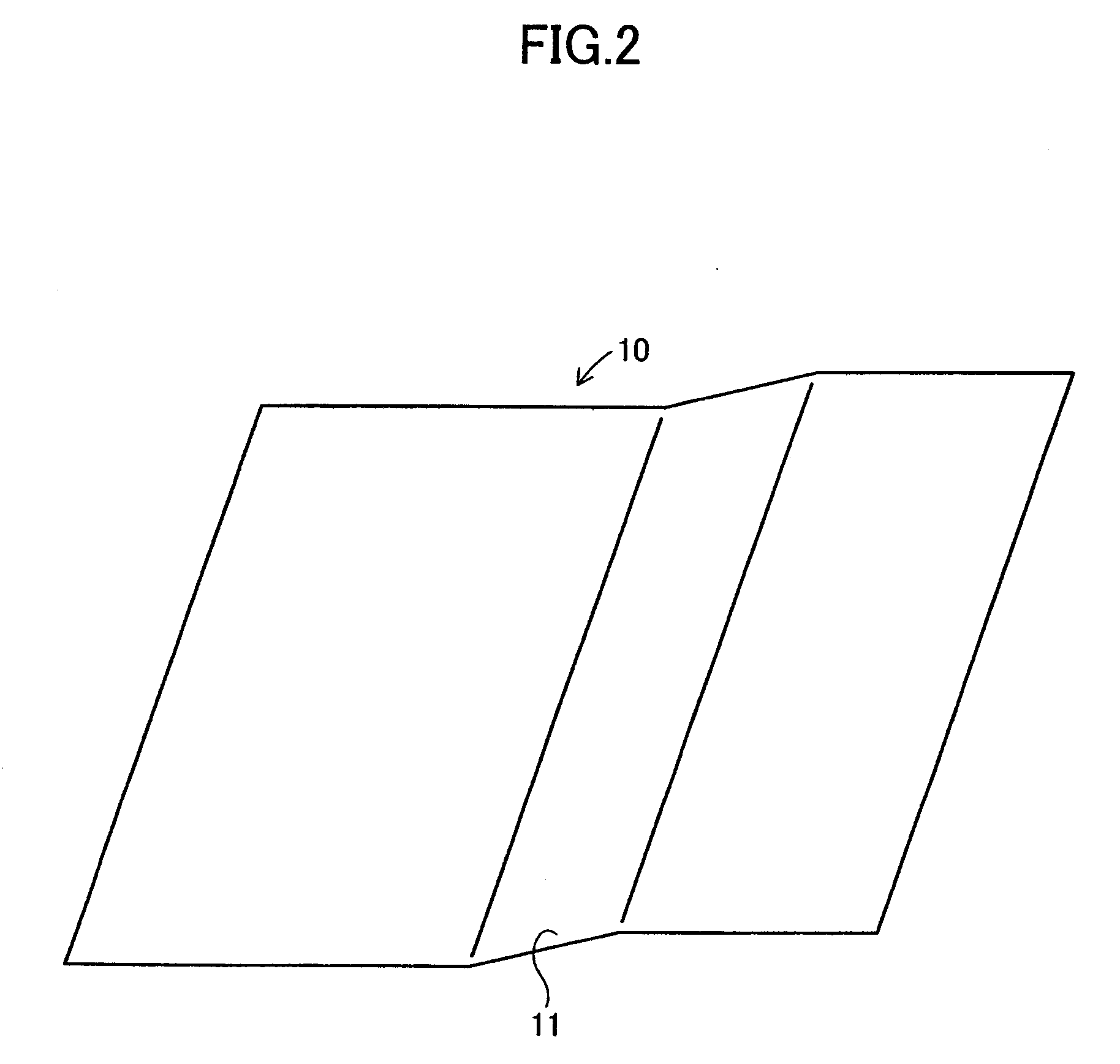Polymer electrolyte fuel cell
a technology of polymer electrolyte and fuel cell, which is applied in the direction of fuel cell details, electric generators, fuel cells, etc., can solve the problems of failure to prevent the inflow of molten resin into the porous member, the disclosure measures are not perfect, and the efficiency of electricity generation in the fuel cell is affected, so as to avoid the drop in electricity generation performance, reduce the area of press-working, and improve productivity
- Summary
- Abstract
- Description
- Claims
- Application Information
AI Technical Summary
Benefits of technology
Problems solved by technology
Method used
Image
Examples
Embodiment Construction
[0028]An embodiment of the present invention will next be described in detail with reference to the drawings. FIG. 1 is a sectional view schematically showing a portion of a polymer electrolyte fuel cell stack according to an embodiment of the present invention. The fuel cell stack has cells T. Each of the cells T includes a pair of fuel cell separators 10 (hereinafter, referred to merely as separator(s) 10) and an electrode structure 20 disposed between the separators 10. The fuel cell stack is configured such that a large number of the cells T are stacked while cooling water channels 30 are sandwiched between the cells T.
[0029]In the thus-configured fuel cell stack, fuel gas, such as hydrogen gas, and oxidizer gas, such as air, are externally introduced to the cells T, thereby generating electricity through electrode reactions in the electrode structures 20. Hereinafter, fuel gas and oxidizer gas may be collectively called gas.
[0030]The separators 10 are adapted to supply gas to t...
PUM
| Property | Measurement | Unit |
|---|---|---|
| diameter | aaaaa | aaaaa |
| thickness | aaaaa | aaaaa |
| diameter | aaaaa | aaaaa |
Abstract
Description
Claims
Application Information
 Login to View More
Login to View More - R&D
- Intellectual Property
- Life Sciences
- Materials
- Tech Scout
- Unparalleled Data Quality
- Higher Quality Content
- 60% Fewer Hallucinations
Browse by: Latest US Patents, China's latest patents, Technical Efficacy Thesaurus, Application Domain, Technology Topic, Popular Technical Reports.
© 2025 PatSnap. All rights reserved.Legal|Privacy policy|Modern Slavery Act Transparency Statement|Sitemap|About US| Contact US: help@patsnap.com



